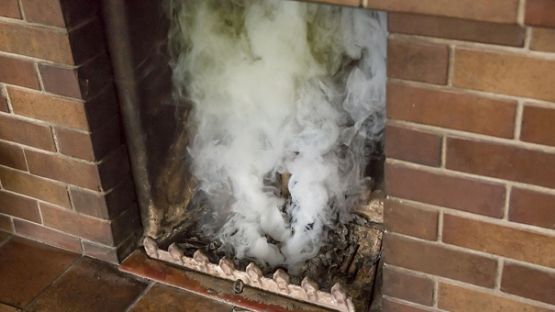Unexpected events like water damage, fires, or natural disasters can temporarily make your home uninhabitable. When that happens, additional living expenses (ALE) coverage can help. This coverage is typically included in a home insurance policy and helps pay for temporary accommodations and other additional expenses while your home is being repaired.
A sudden emergency can disrupt daily life, and finding a place to stay or covering unexpected costs can be overwhelming. ALE coverage ensures that you don't have to bear the financial burden alone if your home is unfit for occupancy due to a covered peril. Instead, your insurance provider covers necessary increases in living expenses, including moving costs, so your household can maintain its usual standard of living.
Key takeaways
- Additional living expenses coverage helps cover temporary housing, meals, and other extra costs if your home becomes uninhabitable due to a covered loss.
- Your insurance policy has coverage limits, including a maximum amount and a time limit, so it's important to understand how much coverage you have.
- To ensure reimbursement, keep receipts, track expenses, and check with your insurance representative before making purchases.
Definition of ALE coverage
Suppose damage by an insured peril makes your home unfit for occupancy, or you must move out while covered repairs are being made; in that case, your insurance provider will compensate for any increases to covered living expenses. Payment is for the reasonable period required to rebuild or repair your home or, if you permanently relocate, the time needed for your household to settle elsewhere.
In this guide, we’ll explain what ALE includes and how to file a claim.
What does additional living expenses coverage include?
If a covered peril forces you to leave your home, your insurance policy may provide coverage for additional living costs beyond your normal living expenses. Your insurance provider will only reimburse costs above your usual spending, which can include the following:
Temporary housing
Whether it’s a hotel stay, short-term rental, or a longer-term apartment, the appropriate temporary housing type depends on your family's needs and the expected duration of repairs. A hotel might be suitable for short-term displacements, while more extended repairs might warrant a furnished apartment to provide more space and comfort for your family.
Restaurant meals
The ALE may cover anything over and above your regular expenses. For instance, if your family typically cooks meals at home and you’re staying in accommodations where you can cook, food costs would not be covered. However, the difference in expense would be if you cannot cook and must eat at restaurants.
Laundry expenses
Without access to your washer and dryer, laundry expenses can add up quickly, especially for families. Using a laundromat instead of your own appliances wouldn't usually be part of your budget, and you could therefore be eligible for coverage.
Transportation costs
If your temporary housing location increases your daily commute, additional expenses such as parking, or public transit expenses may be covered. Covering extra commuting costs helps ensure you can maintain your regular work schedule without financial strain.
Storage fees
Sometimes, furniture and other possessions need to be stored during extensive repairs. The cost to safely store these items until you can return home is typically covered under ALE.
Pet boarding
If pets can't stay in your temporary housing, boarding them may be necessary. Since this is an expense you wouldn't usually have, ALE coverage can help offset these costs.
Utility reconnection fees
When moving into temporary housing, you may need to pay deposits or connection fees for utilities like electricity, water, or internet. These one-time expenses can be covered as they directly relate to your displacement.
What isn’t covered by ALE insurance?
While ALE insurance helps with many additional living costs, it typically doesn't cover:
Mortgage payments or regular rent
These are still your responsibility. Even though you're not living in your home, your financial obligations for your property continue. ALE coverage is designed to cover extra costs, not replace regular housing expenses.
Luxury expenses
ALE coverage is meant to maintain your usual standard of living, not upgrade it. Insurance adjusters will assess whether your temporary accommodations and expenses are reasonable and comparable to your regular lifestyle. Choosing a five-star hotel when a standard one is available may result in partial reimbursement or claim denial.
Repairs to your home
These are covered under the dwelling portion of your home insurance policy. The costs of repairing damage to your home structure are handled separately from ALE coverage. This separation ensures that your living expenses and home repairs receive appropriate attention and coverage.
Expenses incurred before your claim is approved
Check with your insurance representative before making significant purchases or commitments for temporary accommodations. This verification step helps prevent misunderstandings about what will be covered and ensures you stay within policy guidelines.
Coverage limits: How much coverage do you have?
Every home insurance policy has coverage limits on additional living expenses. These can be:
- A percentage of your dwelling coverage: Often around 20-30%, but can range from 10-50% depending on the policy and insurer. For example, if your home is insured for $300,000, your coverage for ALE might be $60,000-$90,000. This percentage-based approach ensures that coverage scales appropriately with the value of your home and potential displacement duration.
- A maximum amount: Some policies specify a fixed maximum amount regardless of your dwelling coverage. Some policies may offer unlimited ALE coverage, though this is less common. Understanding this limit helps you plan and budget for temporary living arrangements.
- A time limit: Your coverage lasts only as long as it takes reasonably to repair or rebuild your home. Insurance providers recognize that extensive repairs take time but expect efficient progress. Most policies specify that coverage applies for the "reasonable time" needed for repairs or rebuilding. This is usually assessed based on the extent of damage, local building conditions, and other relevant factors.
Policies may combine these approaches, such as having both a percentage-based limit and a time limit. Your insurance company will clarify how much coverage you have and any expenses related to your claim.
How to file an ALE claim
If you need to use additional living expenses coverage, follow these steps:
- Notify your insurance provider as soon as possible to understand your coverage and reimburse eligible costs.
- Find temporary accommodations that fit within your policy limit.
- Keep all receipts for hotel bills, meals, and other additional costs.
- Submit your claim with proof of the expenses incurred.
- Remember to track your expenses, keep receipts, and check with your adjuster before incurring expenses or making purchases to ensure coverage.
Do renters and condo policy holders have ALE coverage?
Yes, renters and condo owners may also have ALE insurance:
- Tenant insurance for renters covers additional living expenses incurred if a covered loss makes a rental unit uninhabitable.
- Condo insurance provides ALE coverage for unit owners, though the condo corporation’s policy may cover building-wide issues.
Next steps
Understanding additional living expenses coverage helps prepare you for the unexpected. Reviewing your home insurance policy and coverage limits can help you avoid financial stress if you ever need to live elsewhere temporarily. Contact your insurance provider to discuss your options if you’re unsure about your insurance coverage.













